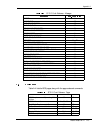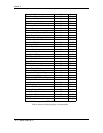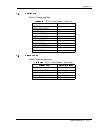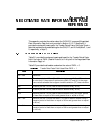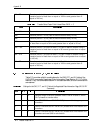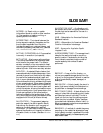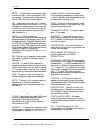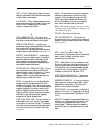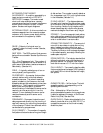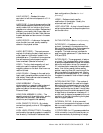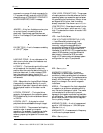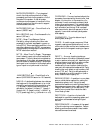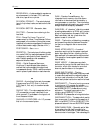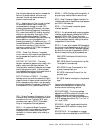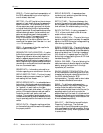
Glossary
Maxtor Atlas 10K III 18/36/73 GB Ultra160 SCSI G-3
CRC – Cyclic Redundancy Check. An error
detection procedure that identifies incomplete
or faulty data in each sector.
CYLINDER – When disks are placed directly
above one another along the shaft, the circular,
vertical “slice” consisting of all the tracks
located in a particular position.
DATA SEPARATOR – The circuit that
extracts data from timing information on drives
that store a combined data and clock signal.
DEDICATED SERVO – A positioning
mechanism using a dedicated surface of the disk
that contains timing and positioning
information only, as compared to surfaces that
are also used for data. (See also
embedded servo.)
DEFECT MANAGEMENT – A technique
ensuring long-term data integrity. Consists of
scanning disk drives both at the factory and
during regular use, de-allocating defective
sectors before purchase and compensating for
new defective sectors afterward.
DIFFERENTIAL TERMINATION – One of
two methods for terminating the SCSI bus,
characterized by a two-line signal: a (+) signal
and a (-) signal. Used to improve noise
resistance when long bus cables are required.
See also single-ended termination.
DISK – In general, any circular-shaped data-
storage medium that stores data on the flat
surface of the platter. The most common type
of disk is the magnetic disk, which stores data as
magnetic patterns in a metal or metal-oxide
coating. Magnetic disks come in two forms:
floppy and hard. Optical recording is a newer
disk technology that gives higher capacity
storage but at slower access times.
DISK CONTROLLER – A plug-in board, or
embedded circuitry on the drive, that passes
information to and from the disk. The Maxtor
hard disk drives all have controllers embedded
on the drive printed-circuit board. (See also
controller.)
DMA – Direct Memory Access. A process for
transferring data directly to and from main
memory, without passing through the CPU.
DMA improves the speed and efficiency by
allowing the system to continue processing
even while new data is being retrieved.
DOS – Disk Operating System. The most common
operating system used in IBM PCs. Manages all ac-
cess to data on the disk.
DRIVE – Short form of disk drive.
DRIVE GEOMETRY – The functional
dimensions of a drive, including the number of
heads, cylinders, and sectors per track. (See also
logical format.)
ECC – Error Correction Code. The
incorporation of extra parity bits in transmitted
data in order to detect errors that can be
corrected by the controller.
EDC – Abbreviation for error detection code.
An end-to-end cyclic redundancy code that is
used to protect data from errors that may be
introduced by the connecting busses, the disk
controller chip, the data cache, or the SCSI
interface in a disk drive. See also, CRC.
ELECTRONICS MODULE – The printed
circuit board containing the drive electronics.
EMBEDDED SERVO – A timing or location
signal placed on tracks that store data. These
signals allow the actuator to fine-tune the
position of the read/write heads.
ENCODING – The conversion of data into a
pattern of On/Off or 1/0 signals prior to being
written on the disk surface. (See also
RLL and
MFM.)
EPROM – Erasable Programmable Read-Only
Memory. An integrated circuit memory chip
that can store programs and data in a non-
volatile state. These devices can be erased by
ultraviolet light and reprogrammed with new
data.



